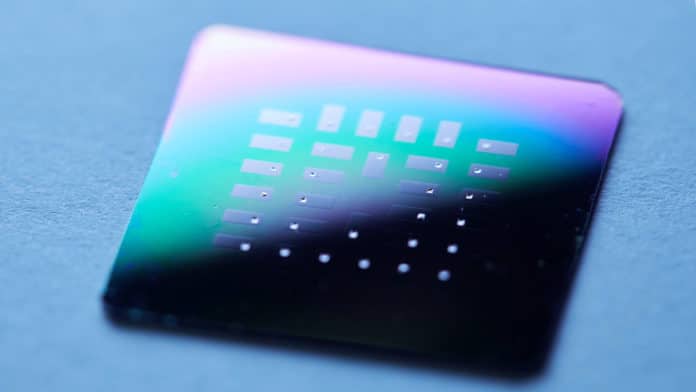Sensors for measuring vital functions, electrodes for Deep Brain Stimulation in treating Parkinson’s disease, and cardiac pacemakers all require power sources that are both reliable and compact. However, because batteries require a specific capacity to store energy, there are limits to how small they may be.
Scientists at the Technical University of Munich (TUM) and the Massachusetts Institute of Technology (MIT) developed a glucose fuel cell that is only 400 nanometers thick. This glucose fuel cell generates electricity using the body’s sugar as an energy source for medicinal implants.
Jennifer Rupp, Professor of the chemistry of solid-state electrolytes at TUM, said, “Instead of using a battery, which accounts for 90 percent of an implant’s volume, our device can be mounted as a thin film on a silicon chip or perhaps in the future even on the surface of the implant itself.”
The glucose fuel cell comprises a cathode, anode, and electrolyte layer. Glucose from the body is converted to gluconic acid, which releases protons at the anode. These protons are carried through the fuel cell by the electrolyte to the cathode, where they recombine with air to produce water molecules. Electrons go through an external electric circuit to power an electronic gadget.
MIT’s Dr. Philipp Simons said, “Using glucose fuel cells as a power source is not new: Previous devices used a plastic electrolyte layer. Since plastic materials are not compatible with common production processes in the semiconductor industry, it is difficult to apply them to state-of-the-art silicon chips in medical implants. Hard materials are needed for this. Another disadvantage of the plastic-based electrolytes is that the polymers made up the plastic were sometimes damaged when sterilizing the implants.”
Scientists, therefore, used ceramic electrolytes for their new fuel cell. The ceramic was easy to miniaturize and integrate on a silicon chip and was bio-compatible. Plus, it can withstand high temperatures.
Scientists created 150 glucose fuel cells on a chip. They mounted the cells on silicon wafers, suggesting that the device could be combined with a conventional semiconductor material. Then they let a glucose solution flow over the wafer.
Many of the cells generated a peak voltage of approximately 80 millivolts, enough to power, for example, sensors and many other electronic devices for implants. Given the minuscule size of each cell, this is the highest-ever power density of any glucose fuel cell design to date.
Rupp said, “This is the first time that the proton conduction in electro-ceramic materials has successfully converted glucose into electricity.”
Journal Reference:
- Philipp Simons, Steven A. Schenk, Marco A. Gysel, Lorenz F. Olbrich, Jennifer L.M. Rupp: A Ceramic-Electrolyte Glucose Fuel Cell for Implantable Electronics, Advanced Materials, April 2022. DOI: 10.1002/adma.202109075
